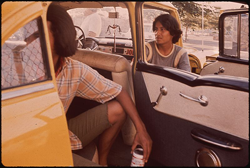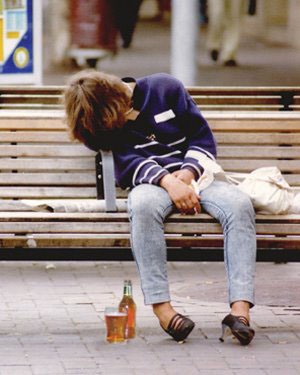
The Journal of Adolescent Health has published a recent article examining how young adults drink and drive (DUI). Different race and ethnic groups pose different types of unique risk factors, the study found. The study sought to identify the contextual risks and protective factors of teenagers who participate in driving. Data was collected from 10,271 adolescents from 1995 to 2001. 67% were white, 12% were Hispanic, 16% were black, 3.6% were Asian, and 49% were Male.
The longitudinal study found that whites were the most likely to drive under the influence of alcohol. They were followed by Hispanics, Asians, and blacks in all the models tested. There was an increased risk for future DUI when adolescents perceived that there was easy access to alcohol in their home.
The research team found that male teens from higher-income families and teens who owned cars of all ethnicityies were at a greater risk for drinking and driving than females, less affluent youths, and those who did not own cars. Another group of teens who reported other high risk behavior were also at a greater risk for DUI. These teens reported high-risk behavior such as binge drinking, marijuana smoking, and driving other peoples’ cars without permission.

 Red Ribbon Week started as an awareness campaign to reduce the demand for illegal drugs, and eventually expanded to include alcohol, tobacco, and violence. This week, MADD is teaming up with State Farm for Red Ribbon Week to discuss the negative consequences of teenage drinking. The team are handing out a booklet called The 411 on Teen Drinking.
Red Ribbon Week started as an awareness campaign to reduce the demand for illegal drugs, and eventually expanded to include alcohol, tobacco, and violence. This week, MADD is teaming up with State Farm for Red Ribbon Week to discuss the negative consequences of teenage drinking. The team are handing out a booklet called The 411 on Teen Drinking.
 New data from the Center for Disease Control and Prevention (CDC) shows that the number of teens who drink and drive has dropped by 54% since 1991. The study examines self-reports of drinking behavior reported to Youth Risk Behavior Surveys. The study also looked at data from blood alcohol levels from teens involved in fatal crashes.The report shows that only 10.3% of high school aged students 16 or older reported drinking and driving in the previous 30 days in 2010. This is a significant drop compared to the 22.3% who reported drinking and driving in the previous 30 days in 1991.The CDC credits the drop in drunk driving among teens to the stricter zero-tolerance laws and to the raising of the legal drinking age to 21. CDC Director Thomas Frieden believes that drinking and driving is not as socially acceptable now. He said, “There is a broader recognition that drinking and driving is not O.K.,” he said.However, car crashes remain the leading cause of death among teenagers in the United States. Dr. Ruth Shults is an epidemiologist at the National Center for Injury Prevention and Control who worked with the study. She said that 1 in 5 teens who were involved in a fatal crash in 2010 had alcohol in their system.
New data from the Center for Disease Control and Prevention (CDC) shows that the number of teens who drink and drive has dropped by 54% since 1991. The study examines self-reports of drinking behavior reported to Youth Risk Behavior Surveys. The study also looked at data from blood alcohol levels from teens involved in fatal crashes.The report shows that only 10.3% of high school aged students 16 or older reported drinking and driving in the previous 30 days in 2010. This is a significant drop compared to the 22.3% who reported drinking and driving in the previous 30 days in 1991.The CDC credits the drop in drunk driving among teens to the stricter zero-tolerance laws and to the raising of the legal drinking age to 21. CDC Director Thomas Frieden believes that drinking and driving is not as socially acceptable now. He said, “There is a broader recognition that drinking and driving is not O.K.,” he said.However, car crashes remain the leading cause of death among teenagers in the United States. Dr. Ruth Shults is an epidemiologist at the National Center for Injury Prevention and Control who worked with the study. She said that 1 in 5 teens who were involved in a fatal crash in 2010 had alcohol in their system.